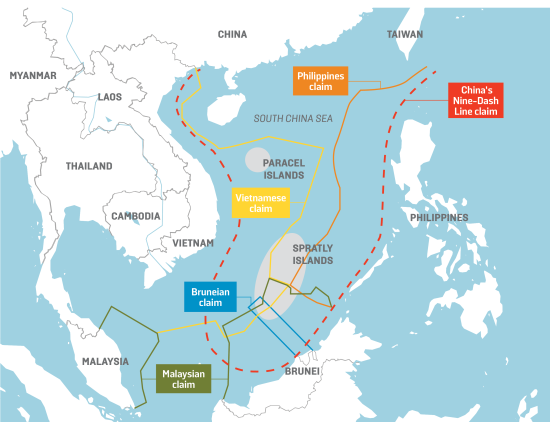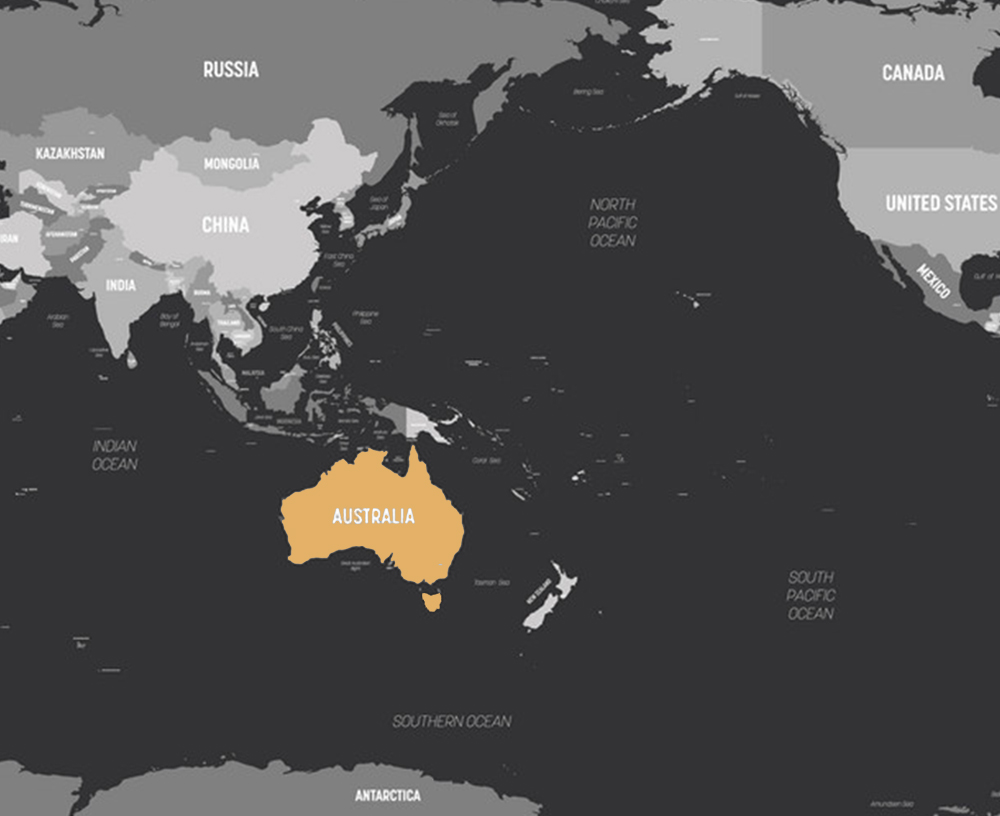The AUKUS agreement signed this week between Australia, the United States and the United Kingdom has come as a surprise to many. What has been announced of the agreement is that Australia will acquire, through defence collaboration with the United States and the United Kingdom, nuclear propulsion technology to build, over the next two decades, eight nuclear-powered submarines. The battle for the Indo-Pacific is warming up with the US now encircling China with both regional and global allies.
Sino-American Rivalry in the Indo Pacific
The United States, having withdrawn her troops from Afghanistan now looks to the Asia Pacific as her more critical theatre of operation. Though the theatre of focus has shifted, the policies of old remain. Just as the US bolstered Ukrainian defence capabilities (through intelligence sharing and $2.5 billion in support of Ukraine’s forces)[1] to counter Russian expansionism into Europe, the AUKUS agreement constitutes US efforts to isolate China from the Asia-Pacific. Professor Li Haidong of Beijing’s China Foreign Affairs University said the partnership “could be described as the iron triangle in the Western camp”.[2]
China’s maritime strategy vis-à-vis the South China Sea is built on the geostrategic value of the highly contested body. It is estimated to hold approximately 11 billion barrels of oil, 190 trillion cubic feet of natural gas, 10% of the world’s fisheries and is the body of water through which 30% of global shipping trade flows.[3] It comes as no surprise then that aside from its strategic capacity as a gateway for the Maritime Silk Road, China is eager to lay exclusive claim to sovereignty over the sea, well beyond the waters afforded to her under the UNCLOS-defined Exclusive Economic Zone.[4] This eagerness has in recent years assumed the form of a rapid construction of artificial islands in the Spratly islands, to be used as a forward base for surveillance to complement China’s ballistic and nuclear missile bastion in Hainan Island.

Given this reality, the AUKUS agreement constitutes British and Australian involvement in what is America’s containment strategy of China. The United States has been considering novel ways to manifest this strategy to contain China, and to accrue the benefit of her ally in the Asia Pacific to this end. In 2011 a bilateral agreement between the US and Australia saw the establishment of a rotational presence of 2,500 US Marines in Darwin.[5] In 2012, an independent report for the US military by the CSIS recommended ‘massively expanding a base in Perth for a US aircraft carrier and supporting fleet.’[6] A decade on, this desire assumes the form of the AUKUS agreement.
Given this reality, the AUKUS agreement constitutes British and Australian involvement in what is America’s containment strategy of China
Whilst the US has been exercising her controversial Freedom of Navigation Operations (FONOP) programme in the South China Sea since 2013 (under which a frontline American warship sailed past a reef close to the disputed Spratly Islands as recently as two weeks ago), the US will not be satiated with such a mild response. Rather, she will seek to manifest a wider deterrence strategy of ‘distributed lethality’, or the domination of waters proximate to the Chinese mainland to pose a sufficient, credible threat to play on Chinese fears of an attack on the mainland. It is in this wider strategy that the AUKUS agreement finds great purchase; having Australia as a supply base with her own aircraft carriers at US disposal will serve only to enhance US containment of China.
Australia is located in a strategic location, to her north and east is the Pacific and to her west is the Indian Ocean. Australia sits right in the middle of the Indo-Pacific operational area, which is now America’s top strategic priority. The US already has a base in Australia, which means she can build up supplies in any war with China, and Australia will become a staging ground for operations against China as it’s close enough to China, but far enough from China that will not allow China’s military to be able to respond decisively. The sharing of nuclear technology will add to Australian operational proximity to China as nuclear-powered submarines, powered by a nuclear reactor instead of a diesel-electric engine, do not need to resurface in order to refuel. This allows for stealthier surveillance operations in contested waters, with a lower risk of detection.

Sabotaging French Designs
American foreign policy endeavours are traditionally multipronged in nature and this agreement is no exception. Whilst Paris has risen as the main EU strategic actor in the Indo-Pacific, America appears to be using heightened tensions against China to limit French ambitions and reach. Though France interrogated the value of multilateralism in her 2017 Strategic Review of Defence and National Security,[7] the strategic detriment of multilateral posturing seems to have taken Paris by surprise; just as Mali snubbed France to ally with Russia in Africa, Australia now snubs France to ally with America in the Indo-Pacific. It is in this context that the sinking of the French contract by Australia should be viewed, not for its commercial, but for its geopolitical implications.
The AUKUS agreement manifests a desire that Washington has long harboured to undertake its crucial pivot to the Asia Pacific in the context of the Sino-American rivalry of the post Cold War period. In return, Canberra inherits a cutting-edge fleet of nuclear submarines that Australia could not have otherwise afforded and London, under her post-Brexit ‘Global Britain’ policy, has given the UK the best chance she will get at shuffling into a bolstered presence in the Indo-Pacific, under the auspices of AUKUS.
[1] Joint Statement on the U.S.-Ukraine Strategic Partnership | The White House
[2] Australia-US submarine deal: Scott Morrison, the third amigo, speaks loudly to Xi (smh.com.au)
[3] The South China Sea: Explaining the Dispute – The New York Times (nytimes.com)
[4] The United Nations Convention on the Law of the Sea (UNCLOS) defines an Exclusive Economic Zone (EEZ) as generally extending 200 nautical miles from the shore of any given territory.
[5] Gillard, Obama detail US troop deployment – ABC News (Australian Broadcasting Corporation)


One comment
Abu Pikachu
26th September 2021 at 3:05 pm
How could France ever believe they were able to lead the containment Strategy against China? Isn’t US presence in the Indo-pacific much much higher? If so, only an idiot would side with France instead of the US